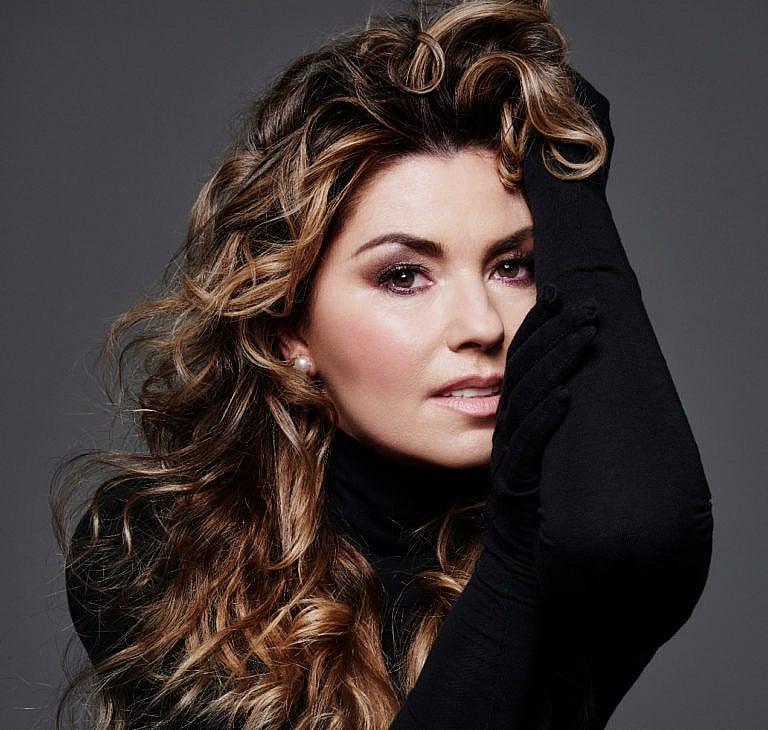Shania Twain’s eternal pop empire
On her genre-jumping new album, Shania Twain still luxuriates in her crossover appeal

(Photograph by Mary Rozzi/August)
Share
What do Harry Styles, Diplo and Haim all have in common? They’ve all duetted with, covered or shouted out Shania Twain. More than two decades after sweeping the charts, the country superstar is still spreading her influence all over pop culture. It’s hard to imagine Taylor Swift graduating from Nashville darling to international pop icon without Shania doing it 20 years earlier.
Shania earned the nickname “Queen of Country Pop” after her 1997 album Come On Over became the best-selling record in history by a solo female artist. Along with her producer and then-husband Mutt Lange, Shania created a suite of songs that were playful, infectious and unpretentiously fun—even the ballads. You didn’t have to have a shelf full of George Jones or Waylon Jennings to stop everything when “That Don’t Impress Me Much” came on MuchMusic, or to croon along to “You’re Still The One” on the radio at the dentist’s office.
These days, Shania is once again ubiquitous on every platform. Scroll through TikTok and you’re bound to hear clips of “Let’s go, girls!” or “Okay, so you’re Brad Pitt.” Shania even recently released a trailer house EDM remix of “Man! I Feel Like a Woman” by the producer Real Hypha, which originated on the social media app. TikTok is the platform where old songs can find new life in cascading remixes, duets and memes. Decades-old tracks from artists like Kate Bush and Fleetwood Mac have become hits again on the backs of popular videos. It’s happening on Spotify, too. In 2021, listeners between 19 and 24 streamed ’90s country as much as listeners over 40. And Gen Z created 89 million playlists featuring songs by Faith Hill, the Chicks and, at the top of the list, Shania Twain.
For decades, the Nashville machine was controlled by powerful cultural gatekeepers who favoured a specific look and sound: usually white, male and cowboy-hatted. Shania defied those expectations from the beginning. Her bare midriff in the video for the 1993 single “What Made You Say That” caused many country purists to write her off as an artist more focused on image and sex appeal than artistry. “I was a disruption to the image of country music,” Shania said in the recent Netflix documentary Not Just A Girl. She went on to release her 2002 album Up! in three different styles: pop, country and an “international” version that blended twang with tabla, fiddle with sitar.
READ: How artist Stan Douglas recreates scenes of political unrest
Her defiance planted the seeds for other artists to cross over. More recently, Lil Nas X’s “Old Town Road” blended honkytonk with hip-hop and R&B. The success of a country hit from a young, Black, queer artist sparked debates among conservative listeners about whether or not it belonged on the country charts—even though the genre was heavily influenced by the African-American community before executives began marketing it to white audiences in the 1940s.
This month, Shania releases her latest album, Queen of Me, and just in time—Gen Z can’t get enough of her. At last year’s Coachella, she surprised the audience onstage during Harry Styles’s headlining set, joining him for a performance of “Man! I Feel Like A Woman!” Sparkling in matching sequins, the intergenerational artists found new resonance in the song’s undertones of androgyny and gender play. That hit’s subversively sassy self-assurance has been claimed and reclaimed decades later. Billboard recently named it the greatest karaoke song of all time, and it’s a bona fide queer anthem. Like her own biggest influence, Dolly Parton, Shania has become an LGBTQ+ icon in a genre that is often painted as rigid and conservative.
On her new album, Shania is conversational and colourful, rarely taking herself seriously. The first single, “Waking Up Dreaming,” is about following your ambitions as far as they’ll take you—a nod to Shania’s own hard-fought journey to world domination. It’s the kind of track meant for throwing your arms up on the dance floor, easily slotting into a playlist between Icona Pop’s “I Love It” and Carly Rae Jepsen’s “Run Away With Me.” In the video, Shania takes nods from ’80s glam rock, donning enough wigs and costumes to fill a drag queen’s closet. Now, as then, she wears leopard print like a second skin.
Shania’s casual refusal to play by Nashville’s rules continues to rankle some genre devotees. A recent article on the blog Saving Country Music asked why she doesn’t go back to her ’90s country roots. But Shania Twain has never made music strictly for Nashville—her target audience is everyone. Going back to the sound of 25 years ago would be to abandon what makes her so relevant now. She never took the traditional country path. She went her own way, and the genre followed.
This article appears in print in the February 2023 issue of Maclean’s magazine. Buy the issue for $9.99 or better yet, subscribe to the monthly print magazine for just $39.99.
